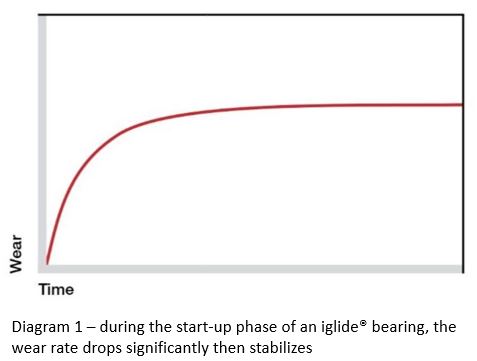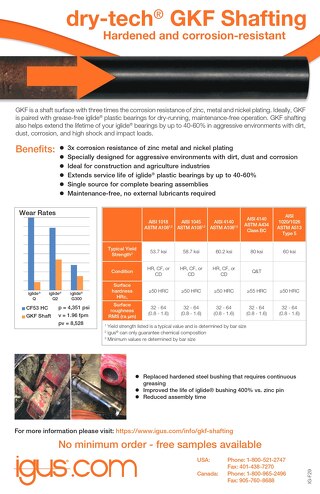Shaft considerations for bearing applications part 2: roughness

In a continuation of our 3-part series, deciding which shaft/pin is best for your application, Part 2 will be a short discussion on the importance of surface roughness. Even if your shaft material is designed with the ideal hardness, the roughness can cause issues and negatively affect your application.
Surface Roughness of Shafting
The roughness of a shaft plays an important part in the life of your application, especially when paired with a self-lubricating bushing. On a microscopic level, a shaft has many peaks and valleys, as seen below.

 When the shaft and bushing first begin to interact with each other, a transfer of bushing material, and dry lubricants happens. The valleys are “filled” with the transfer material and create an optimized running surface after the initial break-in period, thus reducing the coefficient of friction, and providing a stabilized wear rate for the life of the application (See Diagram 1). To learn more on this subject, check out this video on the science behind the iglide® plastic materials below:
When the shaft and bushing first begin to interact with each other, a transfer of bushing material, and dry lubricants happens. The valleys are “filled” with the transfer material and create an optimized running surface after the initial break-in period, thus reducing the coefficient of friction, and providing a stabilized wear rate for the life of the application (See Diagram 1). To learn more on this subject, check out this video on the science behind the iglide® plastic materials below:
What is the ideal surface roughness?
You might think that a “very smooth” surface is the best option. However, having a surface that is too smooth can be just as harmful as having a surface that is too rough. If the surface is too smooth, the transfer of material is not able to take place and you will see an increase in friction due to adhesion. On the other hand, if the surface is too rough the surface will act like a file and removes too much material and will decrease the life of the bushing. The ideal range for iglide bushings is 16-64 RMS for oscillating or pivoting applications, and 8-16 RMS for linear applications.
For more information on igus® shafting, contact our Agricultural and Construction Industry expert here. To learn more about iglide® bearings & bushings, contact an iglide® expert here.



